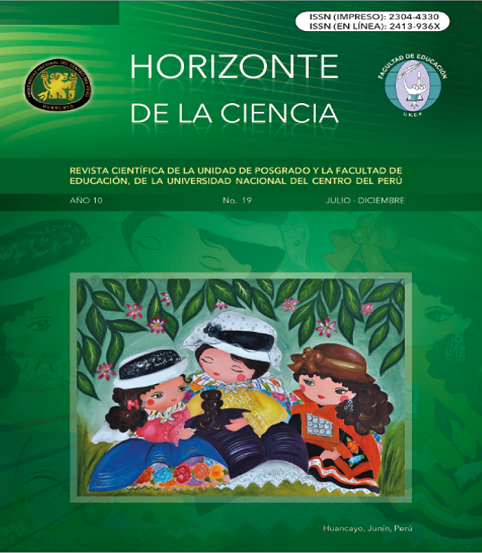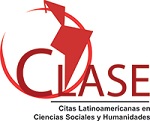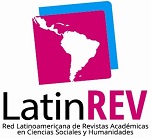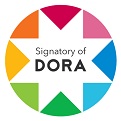Estadística inferencial. Elección de una prueba estadística no paramétrica en investigación científica
DOI:
https://doi.org/10.26490/uncp.horizonteciencia.2020.19.597Keywords:
Estadística no paramétrica, investigación científicaAbstract
El propósito del artículo, fue identificar las pruebas no paramétricas no sujetos a una distribución de probabilidad normalizada para el análisis inferencial adecuado de datos provenientes de muestras pequeñas. Mediante la teoría fundamentada se describió su fundamento y uso: 1 muestra (Binomial, Chi-cuadrado, Kolmogorov-Smirnov, de rachas), 2 muestras independientes (Moses, Kolmogorov-Smirnov, rachas de Wald-Holfowitz, U-Mann Whitney), 2 muestras pareadas (De signo, McNemar, Wilcoxon), m muestras no pareadas (Mediana, Kruskal-Wallis, Jonckeere-Terpstra) y m muestras pareadas (Fridman, Q-Cochran, W-Kendall). Se concluye que estas pruebas son valiosas y robustas, la elección está sujeto al diseño, número y escala de medición de las variables.
Downloads
References
Cochran, W. (1954). Some methods for strengthening the common 2 tests. Biometrics. Vol. 10, No. 4 (Dec., 1954), pp. 417-451.
Berlanga, V. y Rubio, M. (2012) Clasificación de pruebas no paramétricas. Cómo aplicarlas en SPSS.Wallis REIRE, Revista d’Innovació i Recerca en Educació, Vol. 5, núm. 2, 101-113. Accesible en: http://www.ub.edu/ice/reire.htm
Ferran, M. (2002). SPSS para Windows. Análisis estadístico. Madrid: Osborne McGraw-Hill, 2001.
Friedman, M. (1937). The use of ranks to avoid the assumption of normality implicit in the analysis of variance. J Am Stat Assoc.
Hernández, R., Fernandez, C. y Baptista; P. (2014). Metodología de la Investigación. 6ta. edición. México, DF, México: McGraw-Hill Interamericana Editores.
Jonckheere, A. (1954). "A distribution-free k-sample test against ordered alternatives". Biométrika. 41: 133–145. Doi: 10.2307/2333011.
Kendall, M. (1955). Rank correlations methods. Hafner Press, NYC; Edición: Second Edition (1955)
Kendall, M. y Babington-Smith, B. (1939). Tables of Random Sampling Numbers. Cambridge, England: Cambridge University Press.
Kolmogorov, A. (1933). Sulla determinazione empirical di una legge di distribuzione. Giornale Inst Ital Altuari.
Kruskal, W. y Wallis, W. (1952). Use of ranks in one-criterion variance analysis. J Am Stat Assoc.
McNemar, Q. (1947). Note on the sampling error of the difference between correlated proportions or percentages. Psychometrika. pp. 153-157.
Mann, H. y Whitney, D. (1947). On a test of whether one of two random variables is stochastically larger than the other. Ann Math Stat.
Moses, L. (1952). Non-parametric statistics for psychological research. Psychol Bull.
Pearson, K. (1900). On a criterion that a given system of deviations from the probable in the case of correlated system of variables is Duch that it can be reasonably supposed to have arisen from random sampling. Philosophical Magazine; 50: 157-75
Pérez, C. (2001). Técnicas estadísticas y SPSS. Madrid: Prentice Hall.
Pérez, R., García, J., Gil, J. y Galán, A. (2009). Estadística aplicada a la Educación. Madrid: UNED - Pearson.
Smirnov, N. (1939). Estimate of deviation between empirical distribution functions in two independent samples. Bull Moscow University.
Terpstra, T. (1952). The asymptotic normality and consistency of Kendall’s test against trend, when ties are present in one ranking. Indagationes Mathematicae. 14: 327–333.
Visauta, B. (2007). Análisis estadístico con SPSS para Windows. Estadística básica. Madrid: McGraw-Hill.
Wald, A.; Wolfowitz, J. (1940). On a Test Whether Two Samples are from the Same Population. Ann. Math. Statist. Volume 11, Number 2, 147--162. doi:10.1214/aoms/1177731909. https://projecteuclid.org/euclid.aoms/1177731909
Wallis, W. (1939). The coefficient of concordance was independently developed, the correlation ratio for ranked data.
Wilcoxon, F. (1945). Individual comparison by ranking methods. Biometrics Bulletin, Vol. 1, No. 6. (Dec., 1945), pp. 80-83.
Downloads
Published
Issue
Section
License
Copyright (c) 2020 Horizonte de la Ciencia

This work is licensed under a Creative Commons Attribution-NonCommercial 4.0 International License.
















